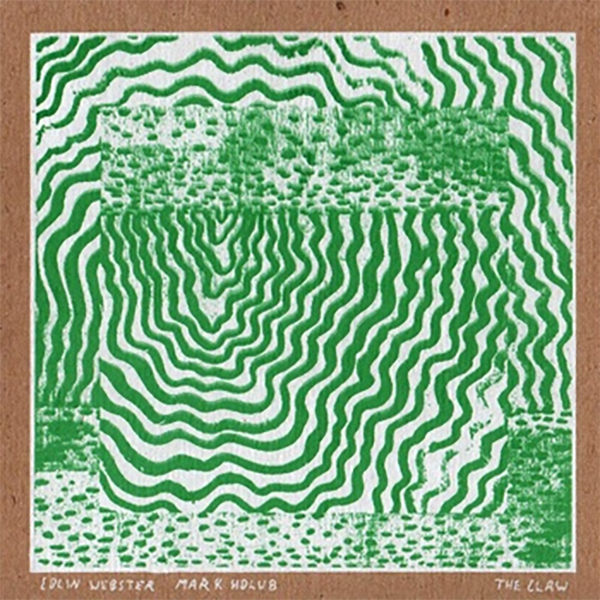
by Ian Mann
August 02, 2012
/ ALBUM
Full of ideas and unexpected changes of direction. Webster and Holub are superb technicians and play well throughout.
Colin Webster & Mark Holub
“The Claw”
(Raw Tonk Records)
In 2011 I reviewed the excellent album “Koi Bombs” (Gaffer Records), a wholly improvised set from a trio consisting of saxophonist Colin Webster and Led Bib members Mark Holub (drums) and Toby McLaren (keyboards). “The Claw”, the first release on Webster’s own Raw Tonk label is essentially the follow up, Webster and Holub recorded a few duets around the time of “Koi Bombs” but didn’t feel that they fitted the mood of that album. The pair are old sparring partners on London’s improvised music scene (since 2005 in fact) and subsequently re-entered the studios in March 2011 to record the bulk of the material that now comprises “The Claw”. Webster’s main gig is with jazz poet Anthony Joseph and The Spasm Band but he also finds time for projects involving more freely improvised music including his collaboration with Holub and a recent project involving French guitarist Sheik Anorak.
“Koi Bombs” didn’t exactly take any prisoners and as its title might suggest “The Claw” is, if anything, even more uncompromising. Webster unleashes his full arsenal of horns (tenor, alto and baritone) and Holub is also credited with “percussion” and sometimes produces sounds beyond the range of the conventional drum kit. The duo went into the studio with no pre conceived ideas and came out with fifteen short improvisations, ten of which can be heard here.
The opening title track features the guttural sound of Webster on (presumably) baritone sax and the whirlwind drums and percussion of Holub. The variety of “metals” heard here suggest that Holub’s kit is supplemented by a variety of small cymbals and other percussive devices.
“UT” is a brief blast of belligerent, free improv skronk with raucous sax and typically kinetic drumming.
The lengthy “No Hidden Depths” initially embraces a greater melodic sense with Webster effecting an almost Middle Eastern sound early on before the piece heads into more obviously improvised territory with Webster really digging in, faithfully shadowed by Holub.
Webster pushes his instruments to the limit with vocalised sounds and slap tonguing among his favourite techniques as he demonstrates on “We’re Done Here”. He’s an excellent technician with a full grasp of the contemporary improviser’s vocabulary. There’s a stunning, strangely beautiful, solo here that sounds as if it may have been played using the mouthpiece of the instrument only.
“They Live” is resolutely heavy duty with raucous sax and thunderous drums. Webster speaks of avant rock, doom metal and Noise as additional influences and traces of these can be detected here.
On “Little One Growing Well” Webster honks and pecks above a dense lattice of drums and percussion with Holub eventually taking over for the album’s first drum solo. Webster’s return is a tour de force of fiercely intense saxophone playing that again hints at an elusive Middle Eastern influence.
“Last Stand” has something of Polar Bear’s sense of exquisite melancholia on a piece with an almost song like structure. Holub’s atmospheric mallet rumbles underpin Webster’s sax on the album’s most accessible and arguably most beautiful track. Eventually Webster begins to ratchet up the tension and finally the piece explodes in a barrage of blistering alto.
“Skua” seems an apt title, Webster’s sax pecking has a certain bird like quality to it as he declaims above the sound of Holub’s drums. One one of the album’s lengthier cuts the duo alternate between grooves and freer passages, full on blasting to more impressionistic moments. Their quick reactions are a hallmark of the recording and both seem to have an equal influence on the flow of the music.
“The Long Forgotten” represents the duo at their most sombre and impressionistic, breathy saxophone flutterings combine with almost subliminal mallet rumbles and cymbal shimmers to create a brooding mood of simmering unease. From this Webster’s sax gradually emerges, slowly building in intensity to create something almost anthemic.
The closing “Glockout” is a sparky free jazz exchange combining Webster’s extended sax techniques with the full array of Holub’s percussion and ending with the eerie tinkling of chimes.
There is much to enjoy about this recording but it has to be said that it is a good deal less accessible
than its predecessor. McLaren’s keyboards lent an added depth and a welcome extra voice to “Koi Bombs” that I rather miss on “The Claw”. This latest recording is more obviously a “free jazz” or “improv” record and while “Koi Bombs” was capable of appealing to Led Bib’s loyal legion of fans some may find this rather more “difficult” and with less overall appeal.
That’s not to say that “The Claw” is a bad record, both Webster and Holub are superb technicians and play well throughout and once again the album is full of ideas and unexpected changes of direction. However their uncompromising stance and the exposed setting ensure that “The Claw” is most likely to be appreciated by free jazz and improv aficionados.
blog comments powered by Disqus